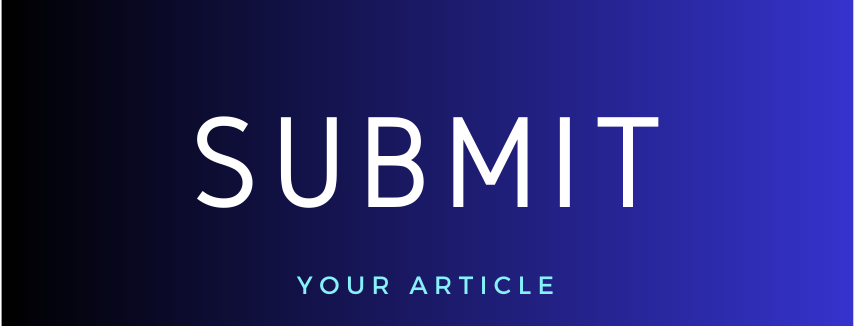Manga is Our World: The Use of Manga as Media in Teaching Writing Recount Text
Abstract
Writing recount texts poses several challenges for students, including a lack of motivation, limited vocabulary, and difficulties understanding the narrative structure. Moreover, the inadequate availability of digital resources in some schools further restricts the teaching and learning process. To address these issues, this study explored the use of manga as a media tool in teaching writing recount texts. A qualitative descriptive research design was employed to describe and illustrate how manga can be effectively integrated into the teaching of writing recount texts in an XI-grade class at SMK Matsaratul Huda. The participants in this study were 22 students from the XI-grade class and an English language teacher. The findings reveal that using manga as a teaching medium for writing recount texts is a viable solution, particularly in the context of limited digital resources in schools. The manga approach enhanced students' motivation and fostered their ideation skills in writing recount texts. In conclusion, manga comics can be an effective medium for teaching writing recount texts, especially when faced with limited school digital resources. It increased student motivation and helped them better understand recount text structure and content.
Writing recount texts poses several challenges for students, including a lack of motivation, limited vocabulary, and difficulties understanding the narrative structure. Moreover, the inadequate availability of digital resources in some schools further restricts the teaching and learning process. To address these issues, this study explored the use of manga as a media tool in teaching writing recount texts. A qualitative descriptive research design was employed to describe and illustrate how manga can be effectively integrated into the teaching of writing recount texts in an XI-grade class at SMK Matsaratul Huda. The participants in this study were 22 students from the XI-grade class and an English language teacher. The findings reveal that using manga as a teaching medium for writing recount texts is a viable solution, particularly in the context of limited digital resources in schools. The manga approach enhanced students' motivation and fostered their ideation skills in writing recount texts. In conclusion, manga comics can be an effective medium for teaching writing recount texts, especially when faced with limited school digital resources. It increased student motivation and helped them better understand recount text structure and content.
Full Text:
PDFReferences
Ahsanah, F., & Utomo, D. T. P. (2020). The Use of Digital Comic in Developing Student’s English Competence. IDEAS: Journal on English Language Teaching and Learning, Linguistics and Literature, 8(2), 373–383. https://doi.org/10.24256/ideas.v8i2.1660
Al-should, Y. (2015). The Causes of Writing Apprehension through Students’ Perspective. 6(3), 535–544. http://dx.doi.org/10.17507/jltr.0603.08
Alqahtani, M. (2015). The importance of vocabulary in language learning and how to be taught. International Journal of Teaching and Education, 3(3), 21–34. https://doi.org/10.20472/te.2015.3.3.002
Aminatun, D. & F. (2021). Students’ Perspective Toward the Use of Digital Comic. Journal of English Language Teaching and Learning, 2(2), 90–94. https://doi.org/10.33365/jeltl.v2i2.1157
Amirza, M. (2019). Writing Recount Text to Senior High School Students via FB Group: What’s on their mind? English Education Journal, 10(3), 213–226.
Anggraeni, R. G., Martono, M., & Rais, A. D. (2015). Improving Students’ Writing Skills by Using Comic Strips. English Education, 4(1), 1-8. https://doi.org/10.20961/eed.v4i1.34615
Anwar, C. (2016). Role-play and Show-and-Tell in Grade 5 Students' Speaking Learning. EduLite: Journal of English Education, Literature and Culture, 1(1), 76-102. doi:http://dx.doi.org/10.30659/e.1.1.76-102
Apriana, D. (2017). Problematika Guru Dari Aspek Ketersediaan Sarana Prasarana Menghadapi Era Standarisasi Pendidikan Nasional. Prosiding Seminar Nasional Pendidikan, 2(1), 291–297.
Ashaver, D. (2013). The Use of Audio-Visual Materials in the Teaching and Learning Processes in Colleges of Education in Benue State-Nigeria. IOSR Journal of Research & Method in Education (IOSRJRME), 1(6), 44–55. https://doi.org/10.9790/7388-0164455
Bodgan, R., & Biklen, S. K. (2007). Qualitative Research for Education: An Introduction to Theories and Methods (5th Ed.). Allyn & Bacon.
Boud, D., Keogh, R., & Walker, D. (2013). Reflection: Turning Experience into Learning - Google Books. https://books.google.co.id/books?id=XuBEAQAAQBAJ&printsec=frontcover#v=onepage&q&f=false
Brenner, R. E. (2007). Understanding manga and anime. Greenwood Publishing Group. Libraries Unlimited. https://books.google.com/books/about/Understanding_Manga_and_Anime.html?id=uY8700WJy_gC
Çakir, İ., Üniversitesi, K., & Fakültesi, E. (2006). The Use of Video as an Audio-Visual Material in Foreign Language Teaching Classroom. Turkish Online Journal of Educational Technology - TOJET, 5(4), 67–72.
Cobern, W. W. (1993). Synthesis Of Research Constructivism. Journal of Educational and Psychological Consultation, 4(1), 105–112. https://doi.org/10.1207/s1532768xjepc0401_8
Creswell, J. W. (2014). Research design: qualitative, quantitative, and mixed methods approaches (4th Ed.). Sage Publication.
Dvorghets, O. S., & Shaturnaya, Y. A. (2015). Developing Students’ Media Literacy in the English Language Teaching Context. Procedia - Social and Behavioral Sciences, 200, 192–198. https://doi.org/10.1016/J.SBSPRO.2015.08.051
Erina, R., Salam, U., & Husin, S. (2017). Teaching Vocabulary by Using English Comics to Improve Vocabulary Mastery. Jurnal Pendidikan dan Pembelajaran 6(12), 1–10. http://dx.doi.org/10.26418/jppk.v6i12.23241
Fitriyanti, N., Bahri, B. S., & Kristanto, A. (2023). Comics As Instructional Media in Education Journals Across Indonesia: A Systematic Literature Review. Jurnal Teknologi Pendidikan : Jurnal Penelitian Dan Pengembangan Pembelajaran, 8(1), 84. https://doi.org/10.33394/JTP.V8I1.6059
Helate, T. H., Metaferia, T. F., & Gezahegn, T. H. (2022). English language teachers’ engagement in and preference for experiential learning for professional development. Heliyon, 8(10), e10900. https://doi.org/10.1016/J.HELIYON.2022.E10900
Hermenau, S. (2018). Manga as a Cultural National Brand: EBSCOhost. Economy, Culture & History Japan Spotlight Bimonthly. https://swebebsco.upc.elogim.com/ehost/detail/detail?vid=0&sid=1849f065-b7f3-4dae-8124-d6af6125ba91%40redis&bdata=Jmxhbmc9ZXM%3D#db=bsu&AN=131722946
Iswari, F. (2021). Delivering Messages through Comic Strip ss Learning Media: An Analysis of Message Forms. Journal of English Language Teaching and Literature (JELTL), 4(1), 46–57. https://doi.org/10.47080/jeltl.v4i1.1221
Ito, K. (2005). A History of Manga in the Context of Japanese Culture and Society. In Journal of Popular Culture (Vol. 38, Issue 3, pp. 456–475). https://doi.org/10.1111/j.0022-3840.2005.00123.x
Judge, S., Bobzien, J., Maydosz, A., Gear, S., & Katsioloudis, P. (2013). The Use of Visual-Based Simulated Environments in Teacher Preparation. Journal of Education and Training Studies, 1(1), 88–97. https://doi.org/10.11114/jets.v1i1.41
Juniarto, B. W., & Fahri. (2019). Using Webtoon Comic as Media in Teaching Reading Narrative Text for Junior High School Students. Retain, 7(3), 153–160.
Kang, Y.-C., Chen, C.-Y., Kang, Y.-C., & Chen, C.-Y. (2016). The Study of Evaluation of the Quality of the Mobile Experiential Learning Model. Creative Education, 7(16), 2490–2503. https://doi.org/10.4236/CE.2016.716236
Kolb, D. (2014). Experiential Learning: Experience as the Source of Learning and Development - David A. Kolb - Google Books. In Pearson Education. https://books.google.co.id/books?hl=en&lr=&id=jpbeBQAAQBAJ&oi=fnd&pg=PR7&ots=VoaNlSWZMf&sig=V8F3rVgV5IBkkNtTXHt0qp0dPy4&redir_esc=y#v=onepage&q&f=false
Kusrini, D., Dewanty, V. L., Putri, A., & Putri, R. A. (2021). Development of Comic Books as Teaching Media for Japanese Language Learners in Indonesian High Schools. Proceedings of the Fifth International Conference on Language, Literature, Culture, and Education (ICOLLITE 2021), 595, 199–204. https://doi.org/10.2991/ASSEHR.K.211119.031
Leavy, P. (2017). Research Design: Quantitative, Qualitative, Mixed Methods, Arts-Based, and Community-Based Participatory Research Approaches. The Gilford Publication.
Lundy, A. D., & Stephens, A. E. (2015). Beyond the Literal: Teaching Visual Literacy in the 21st Century Classroom. Procedia - Social and Behavioral Sciences, 174, 1057–1060. https://doi.org/10.1016/J.SBSPRO.2015.01.794
Matthews, W. J. (2003). Constructivism in the classroom: Epistemology, history, and empirical evidence. Teacher Education Quarterly, 30(3), 51-64.
Mayer, R. E. (2002). Multimedia learning. Psychology of Learning and Motivation - Advances in Research and Theory, 41, 85–139. https://doi.org/10.1016/S0079-7421(02)80005-6
Mayer, R. E., & Moreno, R. (2010). Nine Ways to Reduce Cognitive Load in Multimedia Learning, 38(1), 43–52. https://doi.org/10.1207/S15326985EP3801_6
Mustika, H. Y., Udin, U., & Susanti, M. W. N. (2017). Writing difficulties, recount text, factors contributing to students’ difficulties in writing recount text. Universitas Mataram, Indonesia.
Pande, M., & Bharathi, S. V. (2020). Theoretical foundations of design thinking – A constructivism learning approach to design thinking. Thinking Skills and Creativity, 36, 100637. https://doi.org/10.1016/J.TSC.2020.100637
Purnama, D., Sofyan, S., Gani, A., & Marhaban, S. (2021). The use of comic books as a medium in teaching reading comprehension to improve students' vocabulary mastery. English Education Journal, 12(1), 56–70. https://doi.org/10.24815/EEJ.V12I1.19110
Rokhayani, A., Ririn, A., & Utari, P. (2014). The Use of Comic Strips as An English Teaching Media for Junior High School Students. Language Circle: Journal of Language and Literature, 8(2), 143. https://doi.org/10.15294/LC.V8I2.3018
Salehudin, M., Nasir, M., Hamzah, S. H., Toba, R., Hayati, N., & Safiah, I. (2021). The users’ experiences in processing visual media for creative and online learning using Instagram. European Journal of Educational Research, 10(4), 1669–1682. https://doi.org/10.12973/EU-JER.10.4.1669
Sari, M. K. (2017). An Analysis of Students’ Problem in Writing Recount Text. Journal Educative, 2(1), 15–22. https://doi.org/http://dx.doi.org/10.30983/educative.v2i1.316
Silmi, M. R. (2017). Types of Media and Teaching Techniques in Teaching Speaking at SMP Brawijaya Smart School Malang. Suar Betang, 12(2), 223–233. https://doi.org/10.26499/SURBET.V12I2.33
Stokes, S. (2002). Visual literacy in teaching and learning: A literature perspective. Electronic Journal for the Integration of Technology in Education, 1(1), 10–19.
Sugiyono. (2018). Metode Penelitian Kuantitatif, Kualitatif, dan R&D. Alfabeta.
Susanto, A. (2017). the Teaching of Vocabulary: A Perspective. Jurnal Kata: Penelitian Tentang Ilmu Bahasa dan Sastra, 1(2), 182-191. https://doi.org/10.22216/jk.v1i2.2136
Taber, K. S. (2015). Constructivism in education (pp. 116–144). https://doi.org/10.4018/978-1-4666-9634-1.ch006
Warda, E. G., & Wijaya, A. (2019). The Effectiveness of Teaching Writing Descriptive Text by Using Social Media “Instagram” to Improve Students’ Writing Ability at Junior High School Students. Tell: Teaching of English Language and Literature Journal, 7(1), 16. https://doi.org/10.30651/tell.v7i1.2696
Wijaya, E. A., Suwastini, N. K. A., Adnyani, N. L. P. S., & Adnyani, K. E. K. (2021). Comic Strips for Language Teaching: the Benefits and Challenges According To Recent Research. ETERNAL (English, Teaching, Learning, and Research Journal), 7(1), 230. https://doi.org/10.24252/eternal.v71.2021.a16
Williams, L., & Sembiante, S. F. (2022). Experiential learning in U.S. undergraduate teacher preparation programs: A review of the literature. Teaching and Teacher Education, 112, 103630. https://doi.org/10.1016/J.TATE.2022.103630
Woods, T. J. (2010). Manga: an anthology of global and cultural perspectives. Choice Reviews Online, 48(04), 48-1883-48–1883. https://doi.org/10.5860/choice.48-1883
Yildiz, K. (2022). Experiential learning from the perspective of outdoor education leaders. Journal of Hospitality, Leisure, Sport & Tourism Education, 30, 100343. https://doi.org/10.1016/J.JHLSTE.2021.100343
Zulhasmi Abasa, Hamdani, Z., Darwanto, & Husain, B. (2022). the Student’S Responses To the Use of Comic Strips As a Learning Media. Journal of English Education and Linguistics, 3(1), 95–101. https://doi.org/10.56874/jeel.v3i1.805.
DOI: http://dx.doi.org/10.24042/ee-jtbi.v16i2.18162
License URL: https://creativecommons.org/licenses/by-sa/4.0
English Education: Jurnal Tadris Bahasa Inggris, UIN Raden Intan Lampung is licensed under a Creative Commons Attribution-ShareAlike 4.0 International License. pISSN: 2083-6003, eISSN: 2580-1449.









